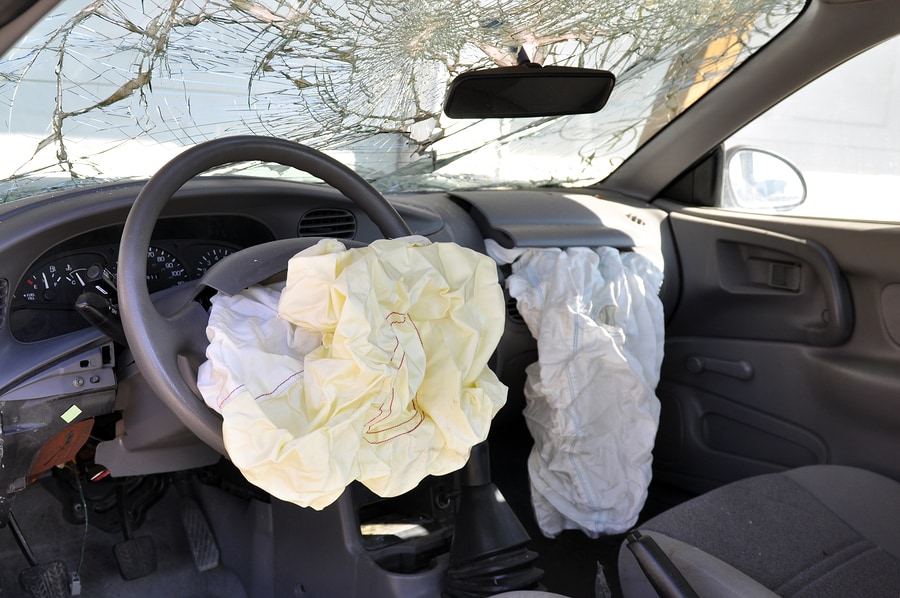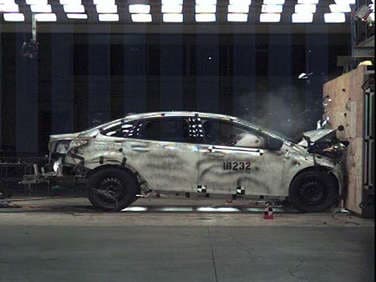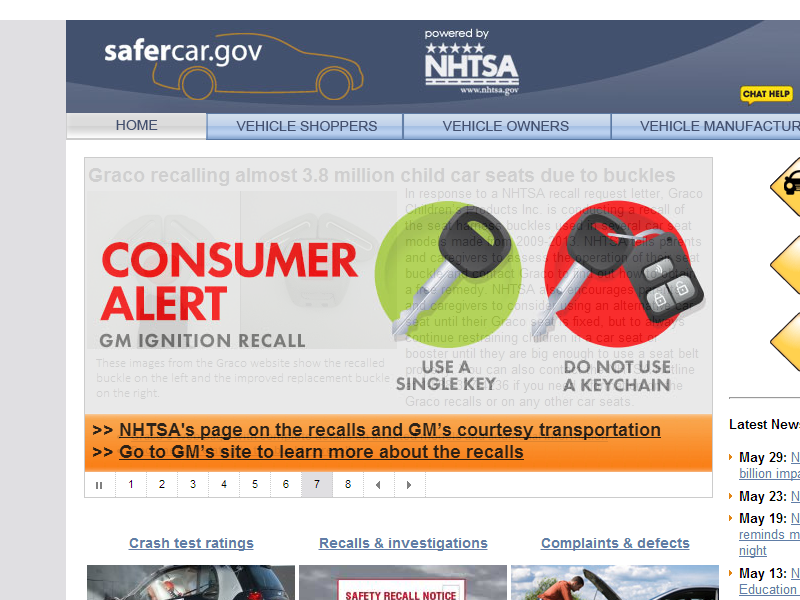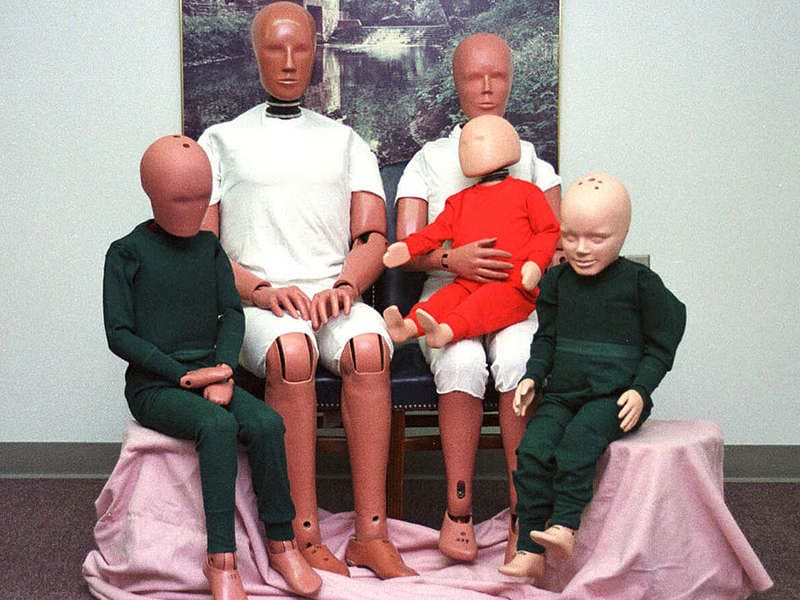Recent Articles
Popular Makes
Body Types
All About The Recall Process

crash deployed airbags
With all the recalls in the news lately, you may be wondering how the recall process works. Obviously the end result is a dealer fixing a problem with a vehicle, but how do the National Highway Traffic Safety Administration (or NHTSA) and manufacturer start down the path towards a recall?
The first step in the process is to detect a safety related problem. These are sometimes detected by the manufacturer, but quite often the problems are reported by owners to either the manufacturer or the NHTSA. These problems may include steering components, fuel system components, defective accelerator controls, wheel defects, wiring problems, and air bag defects.
These complaints, as well as information from the manufacturers, foreign recalls, and other sources are reviewed by the Defects Assessment Division (or DAD). Once enough complaints have been received and the DAD determines that the information indicates a safety related trend or that a catastrophic failure is developing (there is no exact threshold, it depends on the type of problem and the vehicle), they recommend to the Office of Defects Investigation (or ODI) that a safety defect investigation be opened. Alternatively, the NHTSA can be petitioned to open an investigation. The ODI will then conduct an analysis and either launch an investigation or publish the reason why the petition was denied.
The investigation consists of two parts, the Preliminary Evaluation (or PE phase) and then the Engineering Analysis (or EA phase). During the Preliminary Evaluation phase the ODI obtains information from the manufacturer such as data on complaints, crashes, injuries, warranty claims, and parts sales. The manufacturer also has the opportunity to present its views on the alleged defect. PEs can be closed if it is determined that further investigation is not warranted, or if the manufacturer decides to issue a recall. If the ODI decides that further analysis is necessary, the PE is upgraded to an Engineering Analysis.
During an EA the ODI performs a more detailed analysis of the alleged defect, building on the information collected during the PE, supplementing it with inspections, tests, surveys, and additional information from the manufacturer and parts suppliers. The investigation can be closed if the agency is unable to identify a safety related defect or if the manufacturer decides to conduct a recall. If the data shows the ODI that a safety related defect exists, the ODI prepare a briefing to be presented to a panel of experts from the agency. If they concur with the ODI’s recommendation of a recall the ODI notifies the manufacturer and provides them with a final opportunity to present new analysis or data. The ODI then sends the manufacturer a Recall Request Letter.

If the manufacturer still doesn’t issue a recall the Associate Administrator for Enforcement can issue an Initial Decision that a safety related defect exists. This is followed by a Public Meeting where the manufacturer and public can present their information and arguments. The NHTSA’s Administrator then issues a Final Decision on whether or not a recall exists, and may order the manufacturer to perform a recall. The manufacturer can then take the NHTSA to Federal District Court to dispute the recall order, or alternatively if the NHSTA can take the manufacturer to court to compel them to comply with the recall order. In most cases the manufacturer voluntarily recalls their vehicle to fix the defect before it gets to this point in the process.
When the manufacturer issues a recall they must notify all the registered owners and purchasers of the affected vehicles via first-class mail. This letter notifies the owner of existence of a problem, gives an evaluation of its risk, and explains the potential safety hazards. It also instructs the customer how to get the problem resolved, reminds them that the repair will be free of charge, informs them when the remedy will be available, how long it will take to implement, and who to contact in case there is a problem with the repair. The manufacturer has three ways they can remedy the problem that caused the recall: they can repair the vehicle at no charge, they can replace the vehicle with a similar vehicle, or they can refund the purchase price of the vehicle, minus a reasonable amount of depreciation.

The Recall Management Division (or RMD) maintains records of all safety recalls. When a recall is initiated by a manufacturer, the RMD monitors the process to ensure that the scope is appropriate and that the completion rate and remedy are adequate. If they determine that there is a problem with the recall they can open a recall investigation, which can result in an expanding of the recall or an adjustment to the repair process.
If you suspect a safety related problem with your vehicle, you can report it by contacting the manufacturer and/or the NHTSA by visiting http://www.safercar.gov/ and clicking on ‘File A Complaint’ or by calling 1-888-327-4236 or 1-800-424-9393 (toll free from anywhere in the United States, Puerto Rico, and the Virgin Islands). People with hearing impairments have a dedicated line they can call, 1-800-424-9153. The website and phone numbers can also provide recall information for your car.
